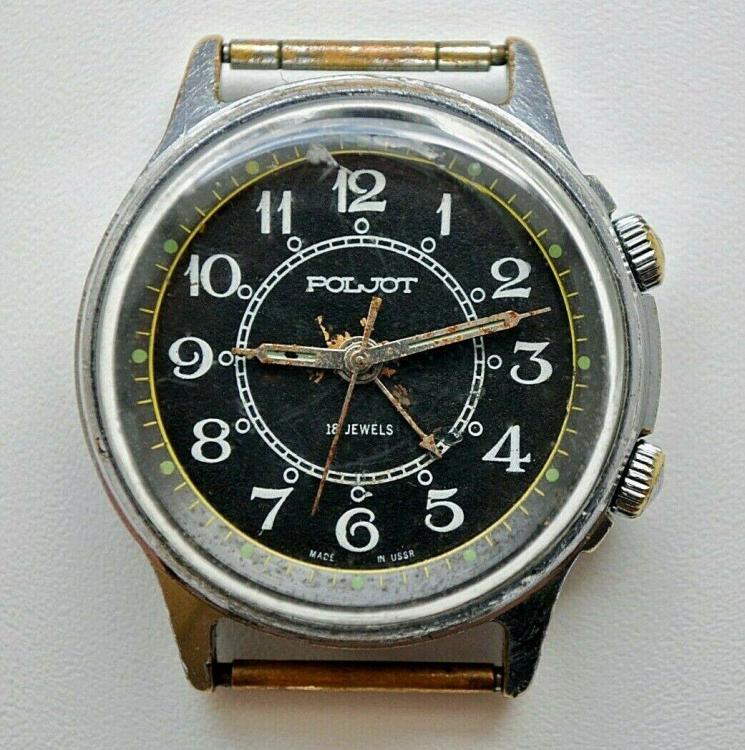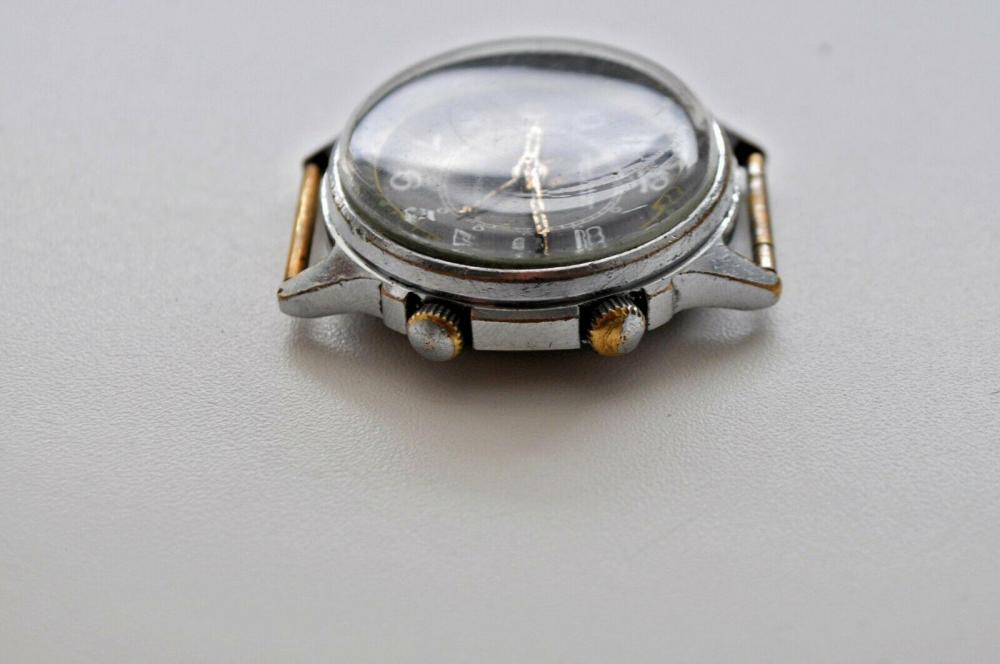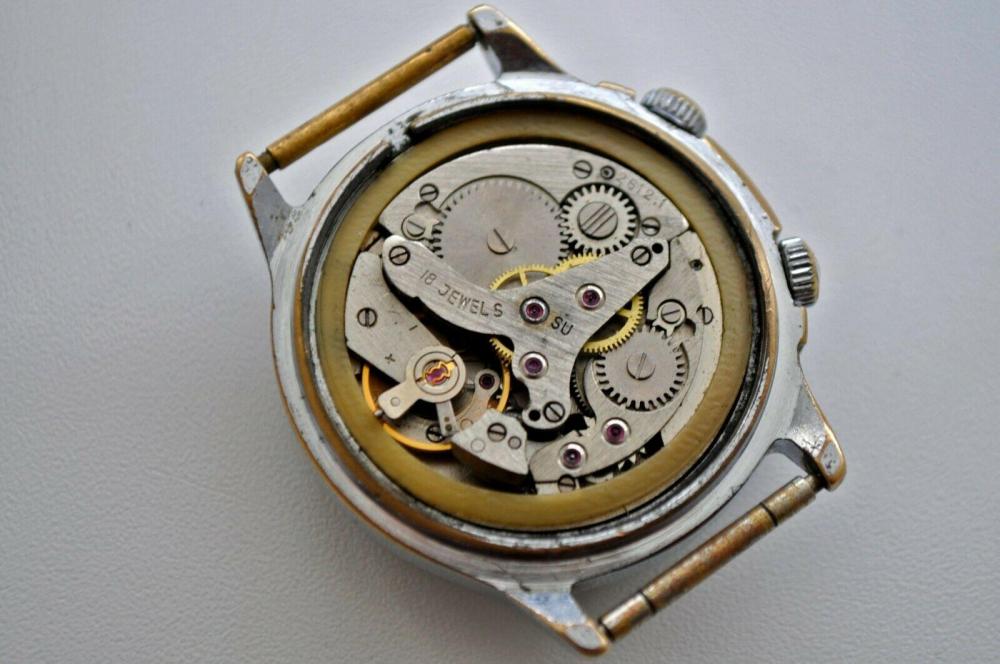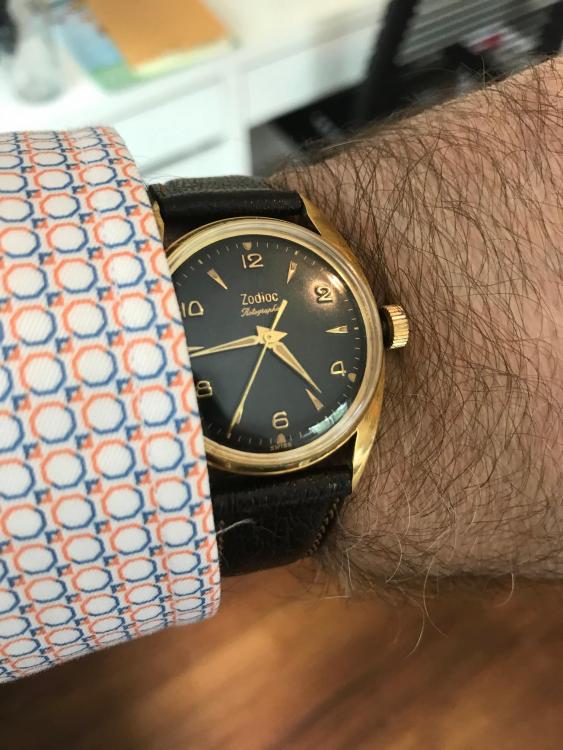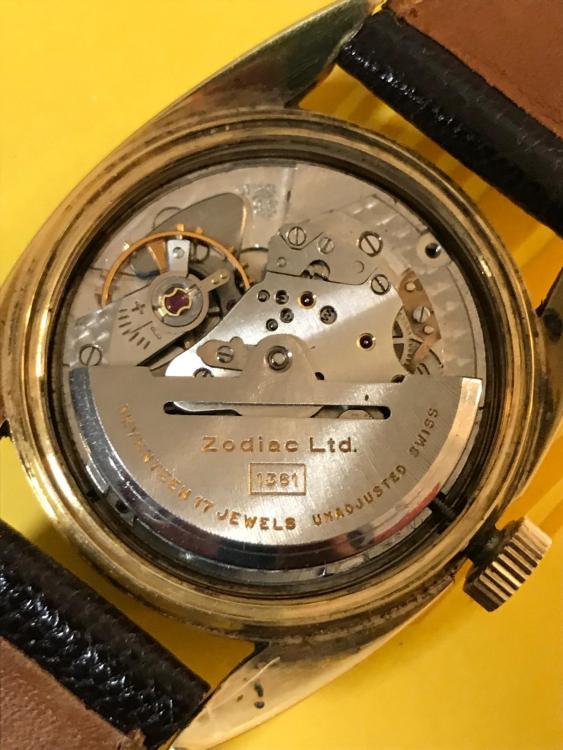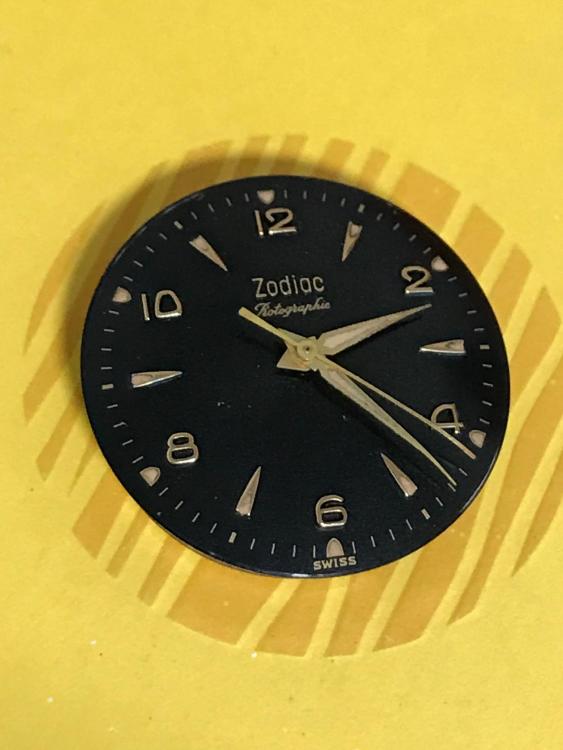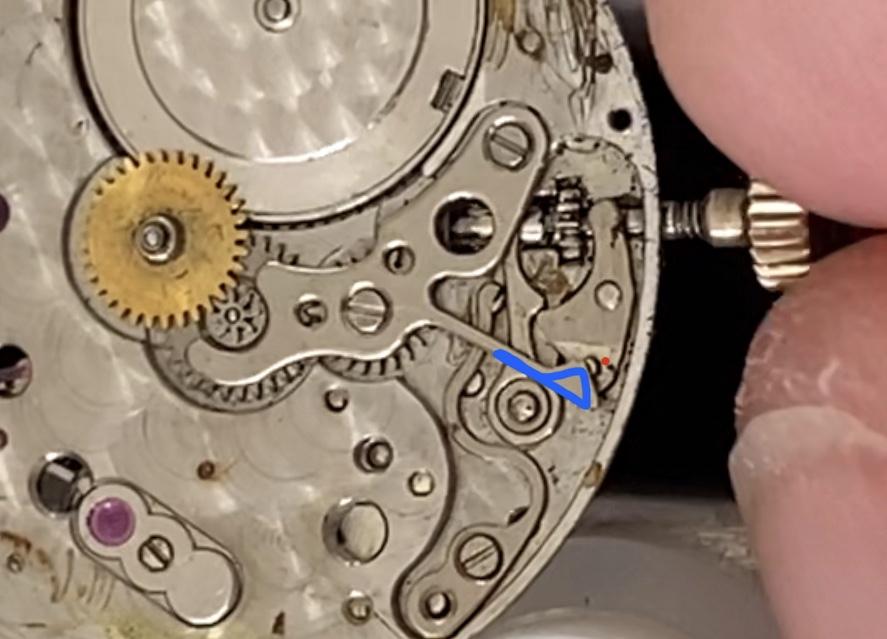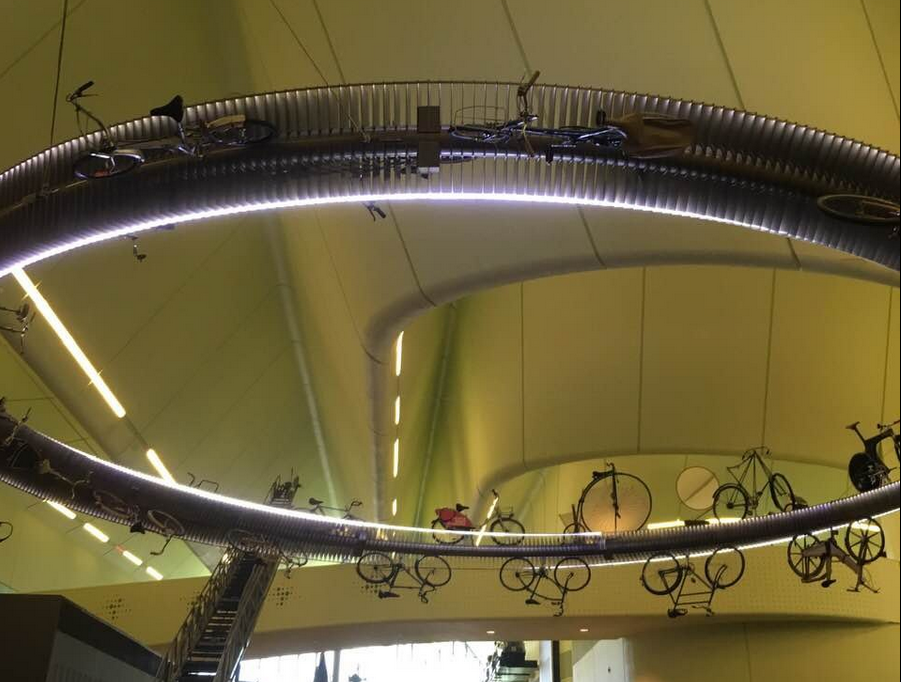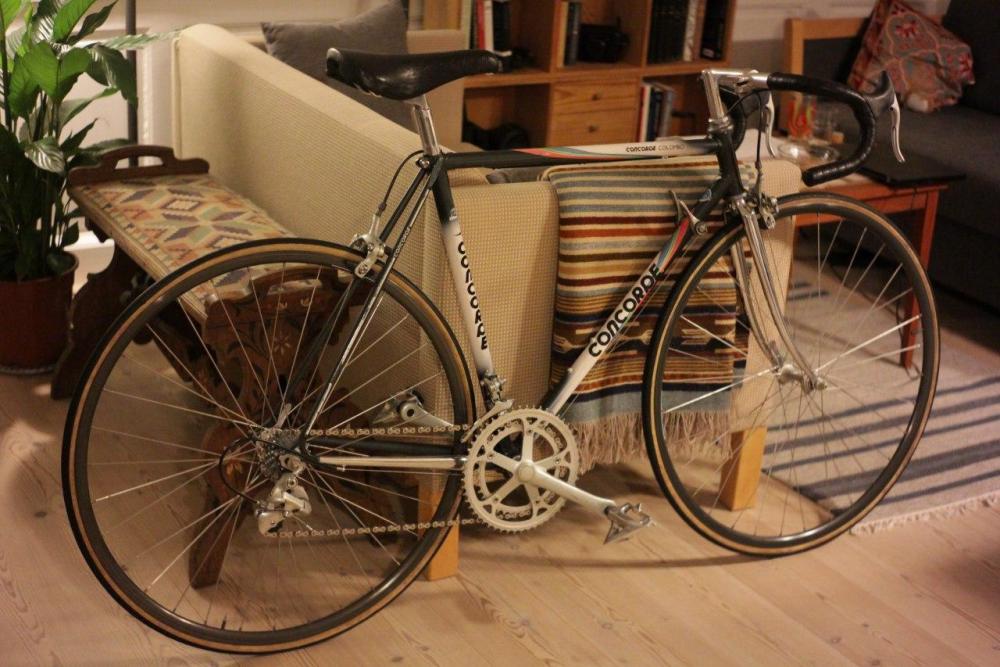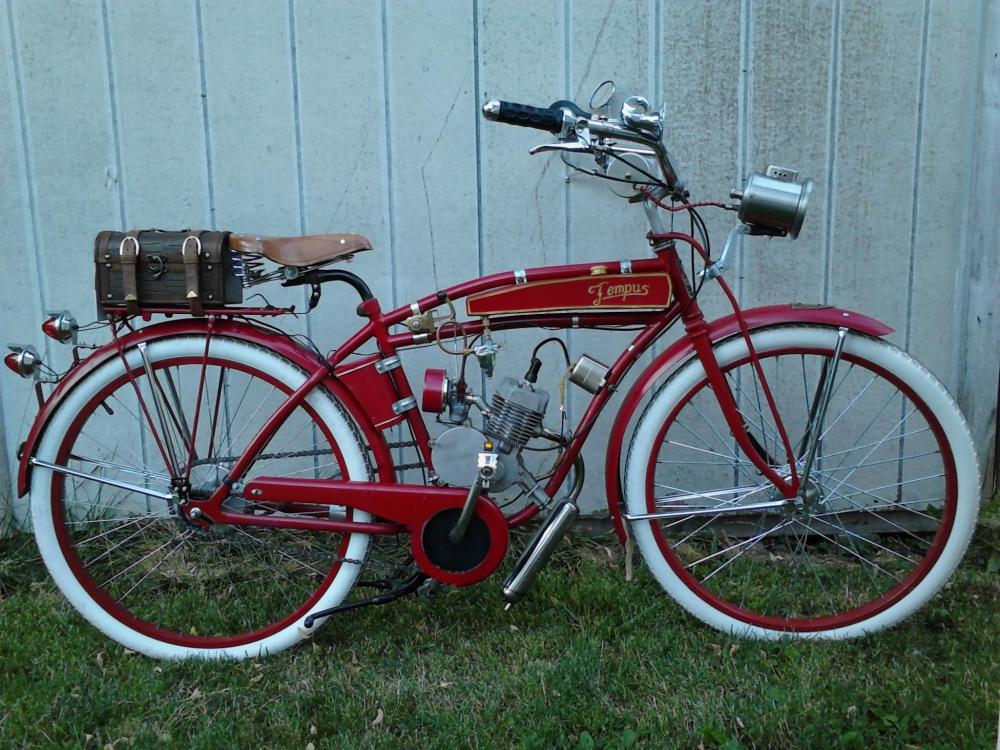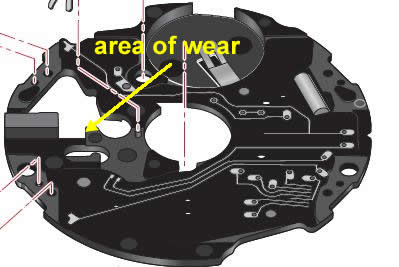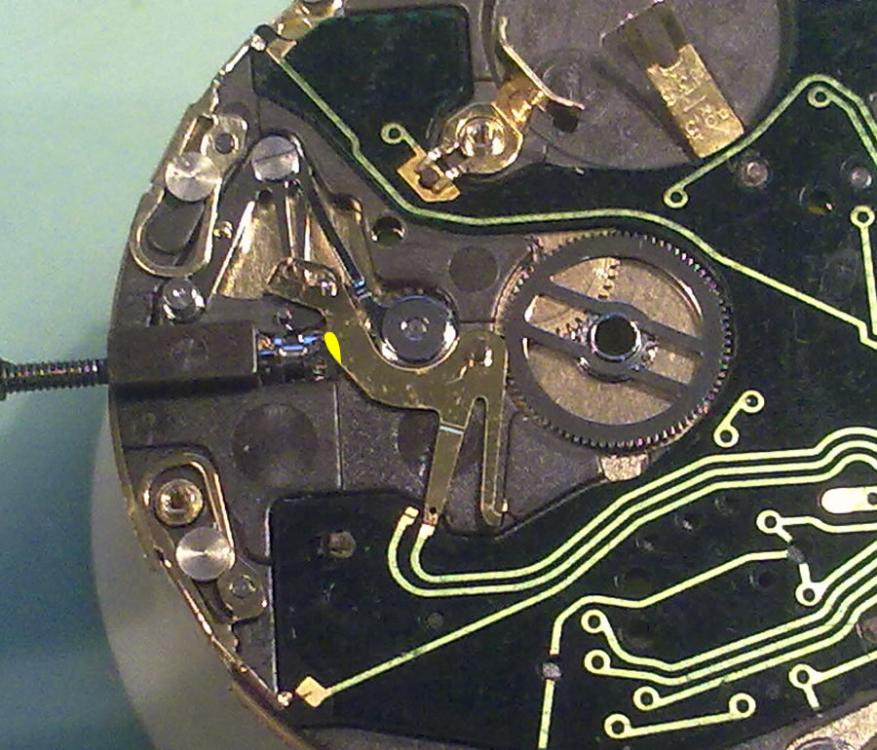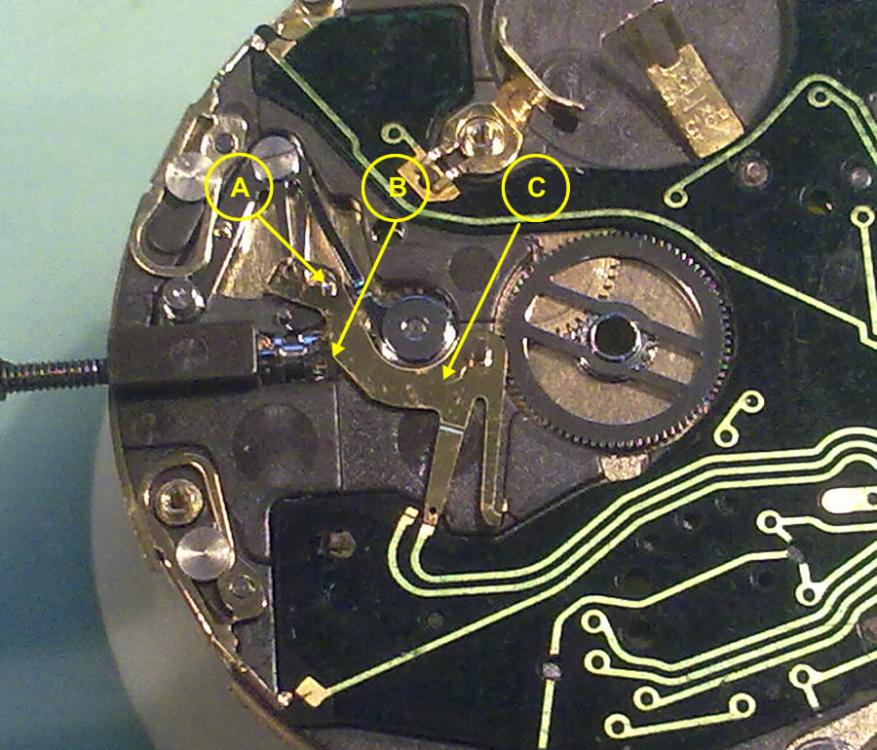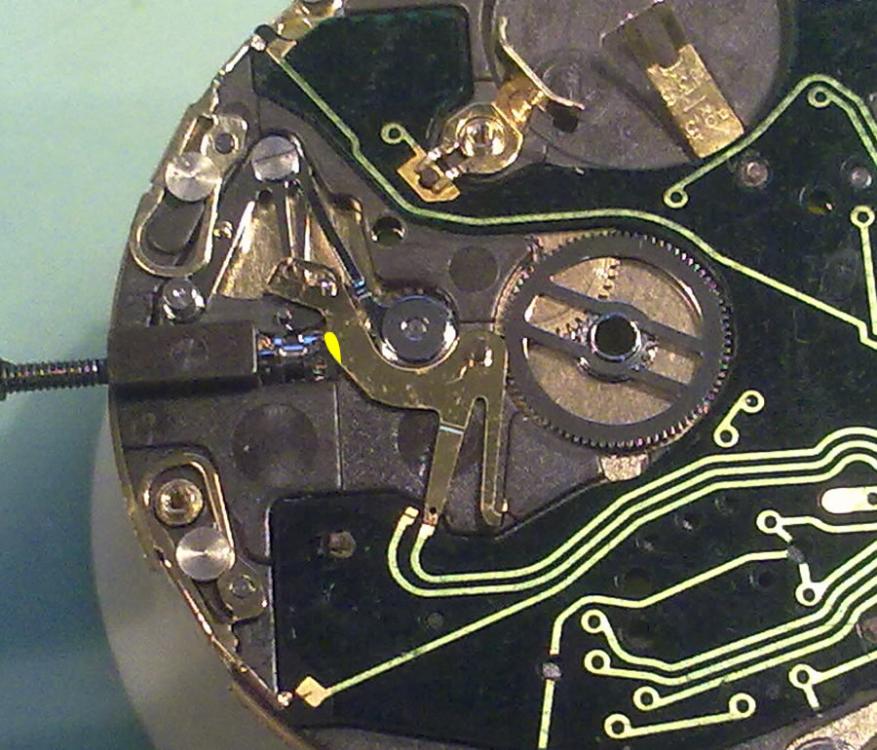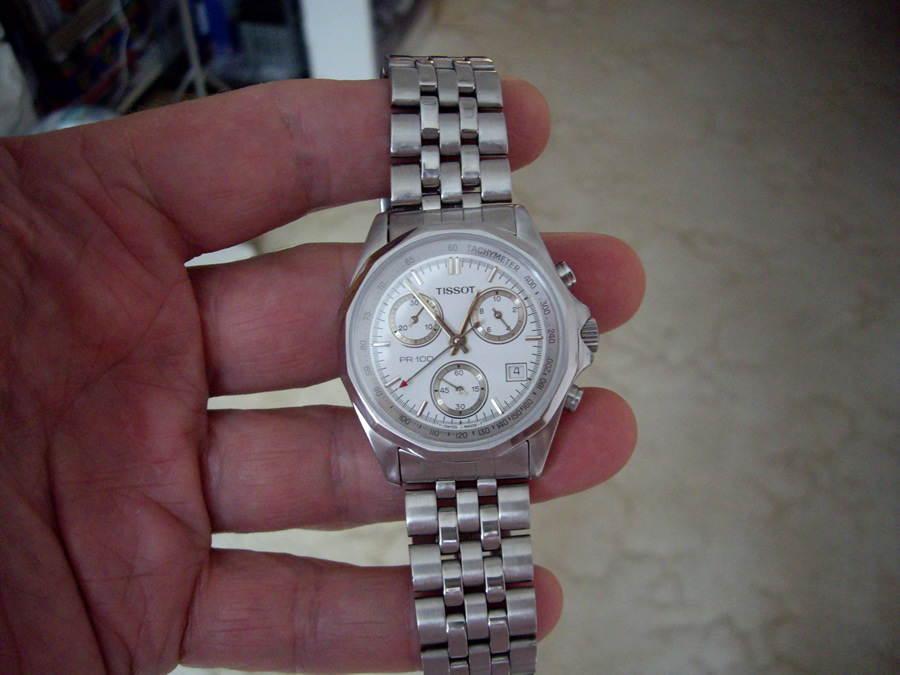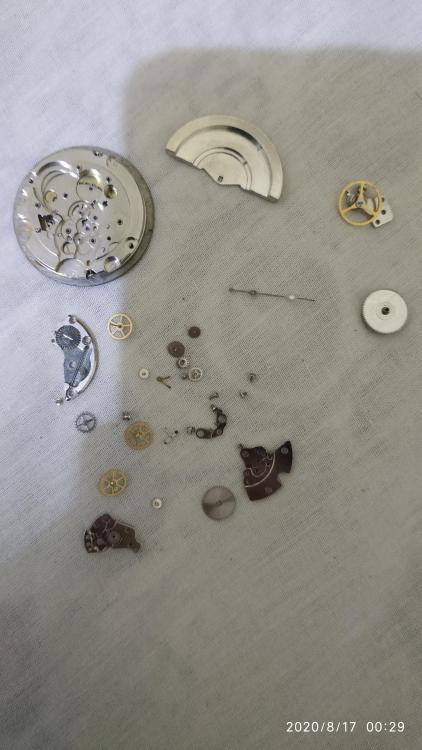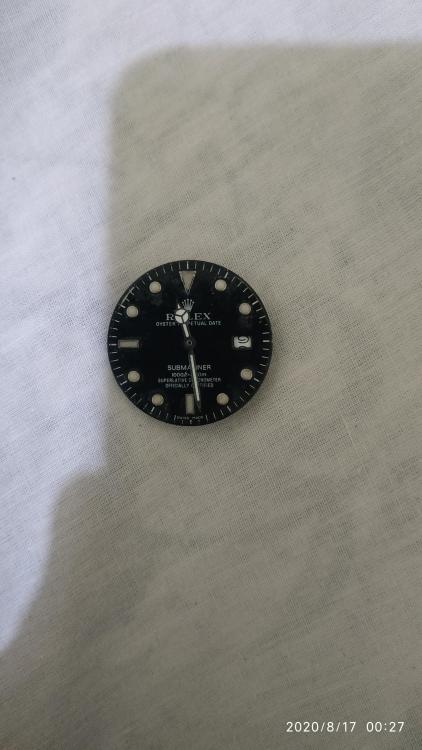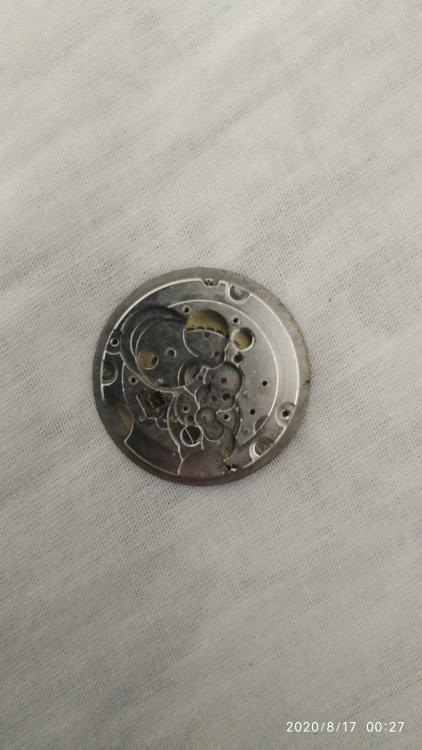Leaderboard
Popular Content
Showing content with the highest reputation on 08/17/20 in all areas
-
I've been on the lookout for one of those to join the 404 club, but with no luck so far. I suspect they are just a little too interesting and rare to fall in to the 404 budget, but you never know. I did pick up a scrap bumper movement in a bunch of other junk, which is now in the to-do pile, so there is a chance I might find one in a batch of other stuff. My understanding is that there is a hammer and what is in effect a gong for the bell, a little like a clock striker. http://www.ranfft.de/cgi-bin/bidfun-db.cgi?10&ranfft&&2uswk&Poljot_2612_1 https://17jewels.info/movements/p/poljot/poljot-2612-1/ The Poljot is pretty much a clone of the AS 1930 http://www.ranfft.de/cgi-bin/bidfun-db.cgi?10&ranfft&&2uswk&AS_19303 points
-
3 points
-
One of the problems we're having here is the video is talking about chronograph hands not the general hand you find. I don't think Mark mentioned it in his video but some of the watch companies actually drive their Chronograph hands-on with Very extreme force with the intent that their service people will break the hands removing them. So for the service people they have an entire set Of brand-new hands. One of the problems and watch repair is that despite the fact that it's a watch and all watches are kind of similar all watches are also entirely different. Everyone has different experiences different something. So we end up with lots and lots of variations. Where conceivably one technique that works great won't work in another situation. If the secondhand is up far enough that you can get your presto tool between the secondhand and the minute hand then you can squeeze and gently pull straight up. Your presto tool ideally should be under the lip holding the secondhand on. Of course situations were those tubes that don't have lips then we might have a problem. Then there are situations where you will have to pull all of the hands up. There's too many variations here. So in my particular case for hand removal I have both the presto tool and the levers and some other ancient hand removing tool which can put more force when popping pocket watch hands off sometimes. Which tool do I use whichever tool fits the situation. I was thinking maybe you do need a few more tools for your toolbox so Here's some websites with catalogs to give you some ideas of what you need. Then the last link a book or two just in case you need a book for some reason. https://www.horia.ch/en/index.html http://horotec.ch/download/%3D+Catalogues/1/06.2016+(English)/48 https://www.bergeon.swiss/ http://www.booksimonin.ch/home.php2 points
-
You were absolutely right about the keyless works not being assembled properly. After I put the yoke, yoke spring and bridge back in place, winds like a champ! Yes it really is a beauty which is why I was hesitant to get into the keyless works. I purchased it recently not working and did not realize how wonderful this movement was until it arrived. I only knew the watch maker as extremely fine quality. thank you all for your wise and solicited advice!2 points
-
Cool! An alarm watch! I like alarm watches. Does it strike against some kind of miniature gong? Or is there some kind of bell that covers over the movement? How does it work?2 points
-
For general work it is not considered better, a stereo microscope is in between your body and you so it makes you keep an awkward position, limits your hands movement and doesn't let you see anything else without rising your head. It is however a needed tool for accurate inspection or really minute work, an example could be pinning a stud on a small hairspring, etc. If you are short sighted try working without glasses, or use a band loupe support. See pinned thread below for a discussion.2 points
-
Your watchmaker did a number on that thing- he's managed to disassemble the going train without removing the hands or dial- that's the work of one who is not not a classically trained technician. Considering it's an heirloom you may be able ton find a watchmaker who can replace the entire movement with low cost automatic. Finding a watchmaker willing to work on counterfeit pieces will be a problem though. I would suggest either packing it away until you've gained the experience to do a movement swap yourself or save up and purchase a watch that would make your father proud.2 points
-
If the winding pinion dosen't turns as you try to wind, check the stem, winding pinion, sliding pinion and the return bar, see if the spring pushing the return bar is dislodged or broke or weak, otherwise if the winding pinion turns but doesn't turn the crown pinion, winding pinion/ crown pinion got worn teeth. This check list should about do it. Good luck.2 points
-
I'm afraid that what it looks like is that the damage has already been done, and the "hat" that you are looking at is actually the seconds hand pipe and should still be riveted to the seconds hand. This suggests that it is either a very tight fit or it wasn't very well riveted in the first place, either way unless you are very careful when removing it and have the facility to re-rivet it, you're going to need a new seconds hand. Because of the design of the canon pinion you're going to need to pack underneath either hand levers or your canon pinion puller so that you're lifting underneath the brim of the hat. You will also need to ensure that the opposing downward force is onto a solid part of the main plate and not on any wheels. Your simplest route forwards though, at least with regards to getting the new movement into the watch is to obtain a new seconds hand.2 points
-
Hi All! Brand new user here. Budget watch collector and amateur repairer in NJ. Wanted to share my latest repair. Picked up this super clean Zodiac Rotographic for $20 at a flea market and after many tweaks it is now running smoothly with a new crown, vintage band and crystal. AS 1361 movement. Amazing how many times simply getting hands aligned can cause you to uncase a watch. Enjoy! Seth https://wornwellvintagewatchblog.wordpress.com1 point
-
Always a clue of quality when they put pretty stars on the ratchet wheel. But the original poster would like to Learn how to fix the watch and because of its quality and availability it makes it a good watch to learn on as getting another movement should be relatively cheap. Now we need to get the movement out of the case and the original poster can start making observations for us and he can learn how to repair it.1 point
-
It's a Wostok 2603 or if it has a calendar 2605. The regulator is as far as it will go over to the "-" or slow side and the hair spring has been pushed way out of round. First thing to try is to carefully move the regulator back into the centre position making sure that the hair spring isn't snagged between the pins. That will hopefully give the hair spring a better shape and you may find it will then run. Judging by the state of the set lever screw hole this has been mauled by a butcher or two in its time though so there could be any number of things wrong with it.1 point
-
Hi I have a Mickey mouse one a timex no less.1 point
-
@nickelsilver You nailed it: It's an AOC non-zoom dissecting scope marked Spencer. I picked it up for free from my college's geology department when they upgraded to zoom Leica dissecting scopes. Those are gorgeous -- I wish I were able to score one of those! My Spencer is cosmetically awful; it's really badly scratched up, but it has gorgeous optics and the price was right. My personal compound scope is a Zeiss Standard that I've upgraded to an LED light source, phase contrast, high eye-relief eyepieces, and a trinocular head. I was able to purchase several highly-corrected Zeiss planar-apochromatic objective lenses for almost nothing (<$300 each). It has been great for microphotography of fungal spores, one of my other passions. Here's a 1000x shot of some Scleroderma sp. spores using an iPhone that I mounted to an eyepiece with a 3d-printed holder. The diagnostic feature I was looking for was whether the spores were spiny or reticulate.1 point
-
American Optical scopes are really nice, I've been a fan for a long time. It sounds like you have an early one, likely marked Spencer. Later they dropped the Spencer and concentrated on zoom scopes. I know one guy who works almost exclusively under a microscope, but for general work I think you'll find that a loupe is better. The scope is great for some tricky jobs and for inspection. I wouldn't be without one.1 point
-
I don't think it is and I don't think the repairer had a problem working on a fake watch until he realized it could not be repaired, parts are not available, or something broke with normal handling as it happens with poor quality mov'ts. Surely it should not have returned in bits but is not like everyone in the world has the same professional standards. Just for information here's a shopping link for a counterfeit 3135, which is surely more expensive than the OP's, but still a midrange on the scale of deception credibility. https://aliexpress.com/item/4000802911410.html1 point
-
The OP is a new member on this forum ... and I'm wondering if this is therefore a wind-up thread or in fact true. Mmm. Skipping the fact that there are polar opinions on fake watches I can't recall hearing of a situation where someone has said "sure I'll look at your watch" and then shrugged and given the owner their watch back in a bag in bits 'cos they don't like it! I see no difference in the analogy of someone who has a replica Cobra kit-car and takes their car in for the engine to be worked on only to be given their engine back in bits 'cos the garage only likes genuine Cobras! They should just decline the work if that's the case! So this is a wind-up right? If not ... then to the OP my question is: what did you say when you took your watch with a missing crown to your 'watch repairer' and he returned the whole watch in bits?!! I'm intrigued!1 point
-
I'm afraid I'll have to return with my answers as I currently don't know. I believe I read somewhere that the alarm vibrates or buzzes, but we'll have to see.... Anyway, my impression is that these watches are popular among collectors of Russian watches and there are hundreds of them on eBay.1 point
-
That stem looks ok to me, judging by the photo. I can see a small amount of wear to the square section, but that shouldn’t be a problem as long as the castle wheel (clutch / sliding pinion....) can slide easily on it.1 point
-
Hi Regardless of the fact it was a fake watch it was your watch ,your property and therefore what he did was inexcusable and no credit to his trade. On opening the watch ,to find it a fake all he had to do was close it up again and return it to you unrepaired explaining why he was returning it to you in the unrepaired state. I would have been up to you then what course to take but to do what he did is nothing short of disgusting leaving you with nothing useable at all. I find it sad that there are people who take it into their own judgment to be moral guardians on our account, we are grown ups and can make our own descisions. End of Rant, appologies if it offends any one.1 point
-
Have a look at the attached photo. Red dot is immediately next to the setting lever stud. The setting lever spring / detent is highlighted in blue. The stud is intended to rest on either side of the triangular-shaped detent. If the detent is sitting on top of the stud, then carefully push it over using tweezers or peg wood.1 point
-
Another problem that I can see is that the setting lever spring (jumper or detent) is not engaging correctly with the stud on the setting lever. This is what gives the keyless works it’s “positive action” ie. the feeling that it is absolutely in either winding or setting mode. What you have is a bit like a sloppy gearbox.1 point
-
I am sure rodabod spotted the fault, I too will put my two cents in upon seeing the vid.1 point
-
The Rolex bracelets I have adjusted have had removable links which have screwed in rivets. Maybe this one is just pinned. Are there any markings on the inside such as arrows indicating the direction of removal.1 point
-
The stem only turns the castle wheel (aka clutch wheel / sliding pinion). It’s important that you understand that first. Your issue is that the castle wheel is not engaging with the winding pinion. Check that the return bar (aka yoke) is able to freely push the castle wheel towards the winding pinion in order to make them engage when in the winding position. Also check that the winding pinion has freedom to turn in one direction (it will be under load as it effectively winds the mainspring).1 point
-
1 point
-
There is another common issue on manual-wind watches which is a worn stem hole which causes play in the stem. I’d take the advice above. One simple way to diagnose the issue is to identify where the transfer of motion is stopping. You firstly need to understand fully how keyless works operate.1 point
-
That is right, but if you think about it, even if pulling the seconds hand alone with levers, the force is on the hand, not on the tube, which is impossible to grab propey, as its lower edge is well within the minute hand or cannon pinion. Now, it is true thay generally watchmakers like to use levers to better control force as opposed to a presto type. I have only split a seconds hand once with a presto tool, and kind.of switched to levers now. In the recent video below Mark shows the use of a tool that pushes on the pivot instead than on the dial, I suppose that helps even if the pulling force is always on the hand anyway.1 point
-
That is right. Another way is to enroll in the training on watchrepairlessons.com, which I did, but there is no forum badge for that.1 point
-
One of the problems with the procedure you describe above is that you weren't necessarily pulling on the second hand in the correct location. It was being pulled up By the force of all the other hands. As the other hands have bigger holes the hand was being lifted up by the hand itself not the protruding part of the tube you have photographed above. That's why the hand came off more than likely.1 point
-
I find this interesting timing this morning? I was searching for something else in my horological folder of downloads stumbled across this PDF. The PDF title is educational opportunities. Seeing as how I had zero idea how or why I acquired the document I did a search I found the link where it came from that's attached down below. So if you're in the UK names to cover quite a few opportunities. http://www.clockmakers.org/wp-content/uploads/2017/03/A-Helping-Hand-for-Students-56-Version-4.pdf1 point
-
I get the impression that the characteristic look of classic small watch fonts results from a design that works well with pad printing , with tiny serifs to mitigate the effects of surface tension. There's a nice article about it here discussing a font inspired by old watch print fonts: Decimal watch font It looks like the printed decal method is not constrained in the same way, so many other fonts are open for experimentation? I've seen a lot of dial fonts that do miss the mark for me, they don't have the same "watchiness" that you'll see from some of the older pad printed fonts. I tried vector tracing raster images of dial fonts, but I was never quite happy (just on screen) with the results for the crispness. I started looking for similar fonts to replicate the look, or even re-creating the font using font design software like birdfont or fontforge or what have you. I guess much like re-tracing the raster characters in inkscape, but with more font-specific design tools. Other than the one menioned above, are there any classic pad-printing-style watch fonts available you are aware of? Great work on these dials, I am impressed and reinspired to open some of my earlier preliminary efforts in that direction. The yellow escher lizard diver is a classic!1 point
-
Just in case anyone missed it. Watch Repair Channel now covers the Poljot cal, 3133:1 point
-
the Polish ebay store had the part in another listing... $20 inc $10 shipping and handling... spanky spanky... but at least it's on the way... ;>1 point
-
If bikes of all kinds are your thing, and you find yourself in Glasgow then I highly recommend the Riverside Museum (actually even if bikes are not your thing). Click the links for a little more of a flavour of the place. https://www.tripadvisor.co.uk/Attraction_Review-g186534-d214166-Reviews-The_Riverside_Museum_of_Transport_and_Travel-Glasgow_Scotland.html#photos;aggregationId=101&albumid=101&filter=7&ff=390872885 You can easily spend a day in the place. The Riverside is second (in my opinion) only to the National Museum of Scotland in Edinburgh as must see museums round here. The NMS also has some interesting cycling exhibits. https://www.nms.ac.uk/explore-our-collections/stories/science-and-technology/bicycles-at-national-museums-scotland/1 point
-
1 point
-
Bicycles are another fixation of mine. I like to work on them almost as much as I do watches. I tend to make my tools and skills available to the neighborhood kids who nedd work done on their bikes. I also always wanted an early motorbike, like from the 'teens to early twenties. Being tremendously expensive though, I had to find another way. So I built one. This here is "Tempus" (because time flies). It has the frame of a 1948 JC Higgins balloon-tire cruiser, to which I bolted a 50 cc two-stroke engine. I fabricated the tank, the headlamp (which is actually electric) the clutch lever, and a number of other little parts. It has a leather saddle and a little leather-covered trunk. It's not very fast, maybe 30 mph tops, but for in-town it does very well. And it's almost theft proof, in that nobody has anything vaguely like it for miles around.1 point
-
I've just serviced and refurbished a Tissot P372/472-1 chronograph, this has the ETA 251.272 movement. There was a problem with the keyless works. After reassembly and setting the stem to normal position, then second and third position and repeating this a few times, the centre second stop lever which is also a switch, 'C' in the photo, tended to jump off of the setting lever stud, 'A' in the photo. On close inspection of the lever, I could see that the tip of stem while set to normal position was jamming underneath the stop lever at 'B' in the photo and lifted the lever off the the setting lever stud. The solution was to remove part of the stop lever, indicated in yellow, at the point of interfearence as shown in the second photo. It seams that over time, the tip of the stem had worn away an area of the electronic module, thus allowing too much travel of the stem. Finaly, the finished Tissot P372/472-1 with ETA 251.272 movement. I love it.1 point
-
All I told him . " I have a watch it missing the crown , and I wasn't have the watch with me at this time " . He said " ok but I need to see it first cause every watch have specific crown not all is same " . I take the watch to him again and it was working just fine even with the missing crown . " He see it and told me "" ok leave it to me and I will get new crown to it "" . I left the watch with him for over 2 weeks . Then I go to him and ask for the watch and he said " there are some broken parts and it will take too long to fix " at this time I know that he can't fix it . So I ask for the new crown if he get it ( after 2 weeks ) and he said no not yet . So I ask him for the watch and told him I will not fix it and I will accept it as it . He give me the watch like you see . And when I ask him to get it back together he said " I apologise for you but really I can't get it back together it will take for ever so if you need money to give to another watch repair man to get it back together I will give you " and I refuse his money and get my watch back . This is the all story for this watch .0 points
-
0 points
-
0 points





